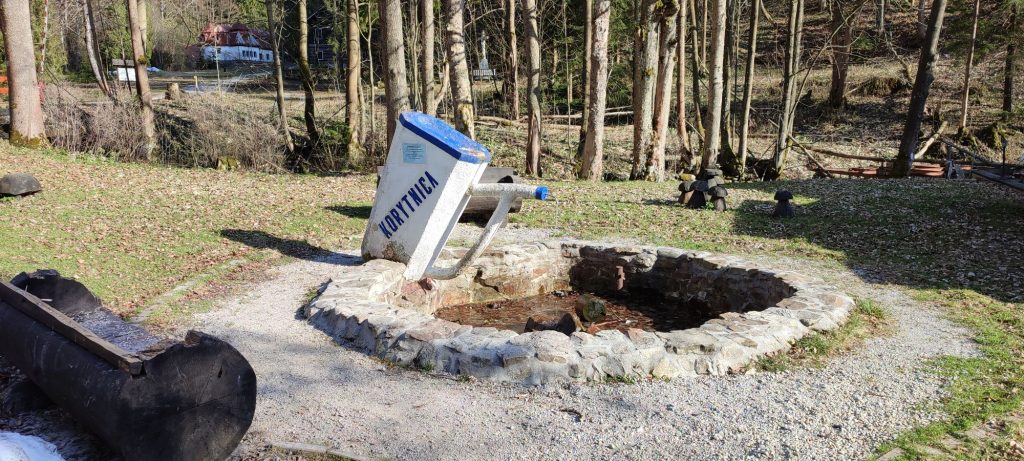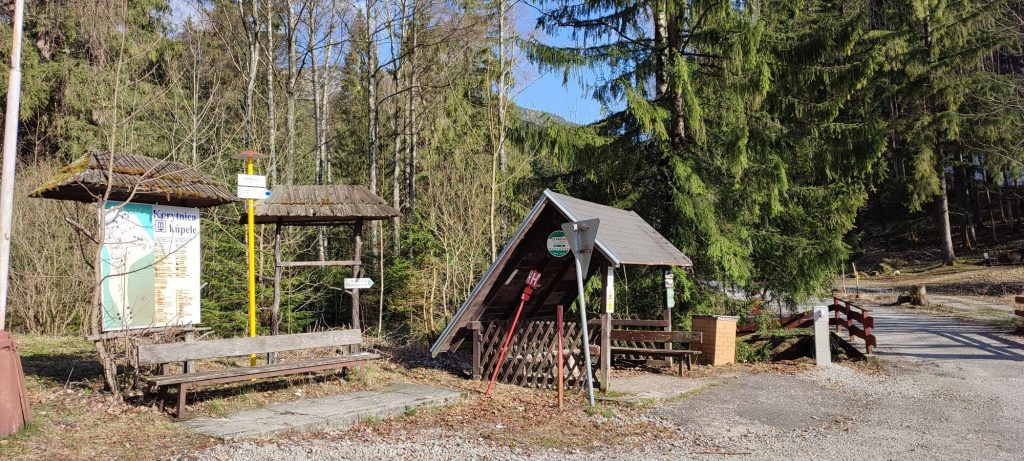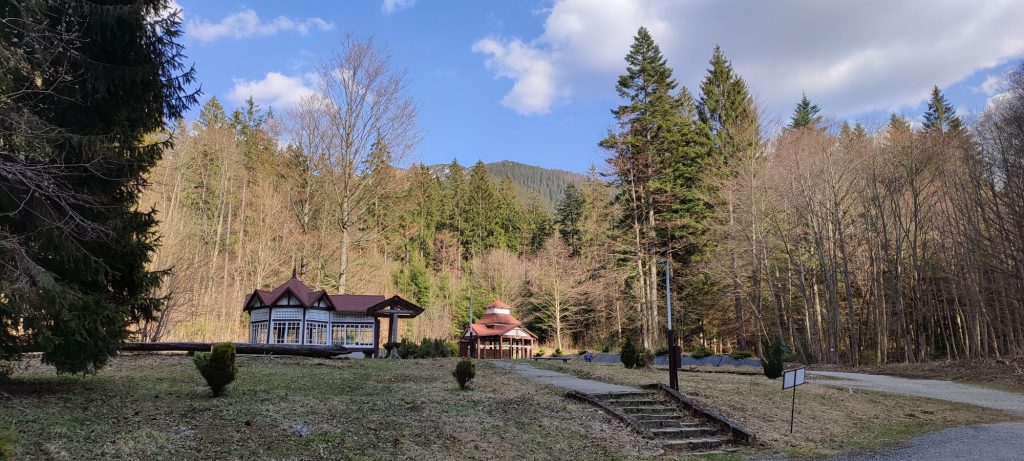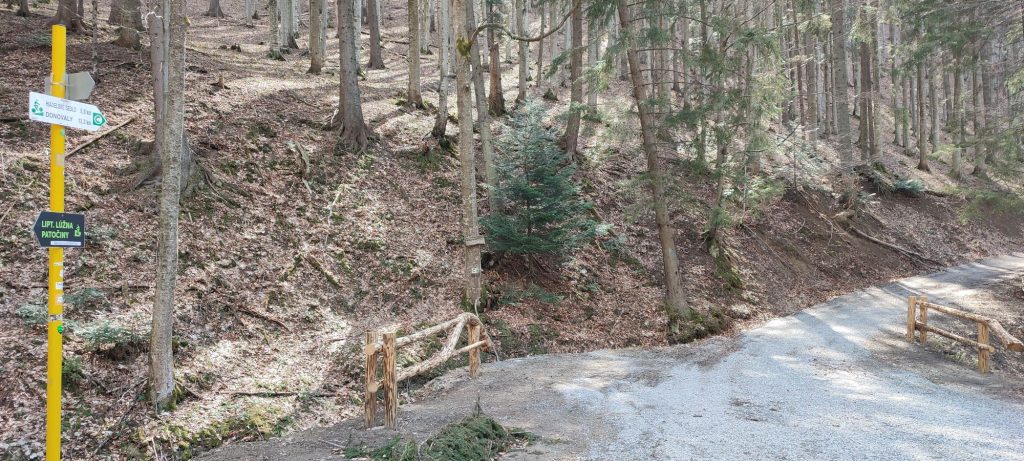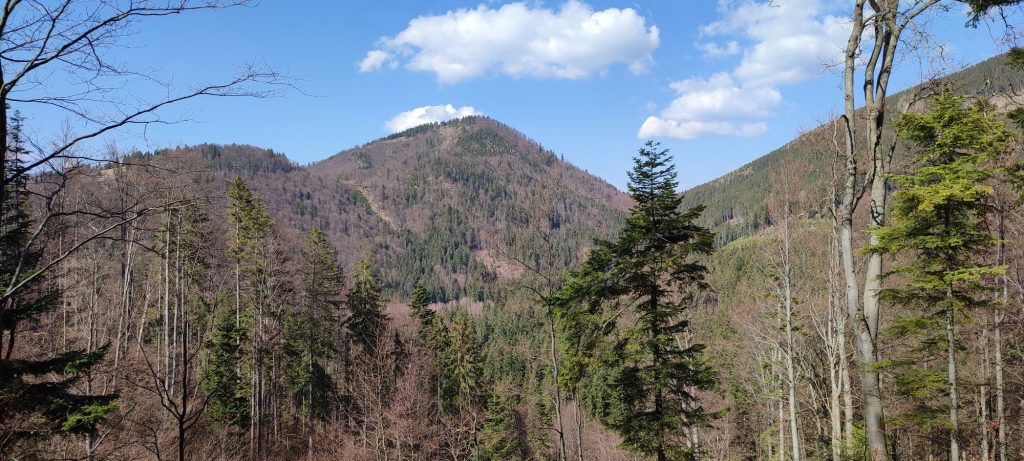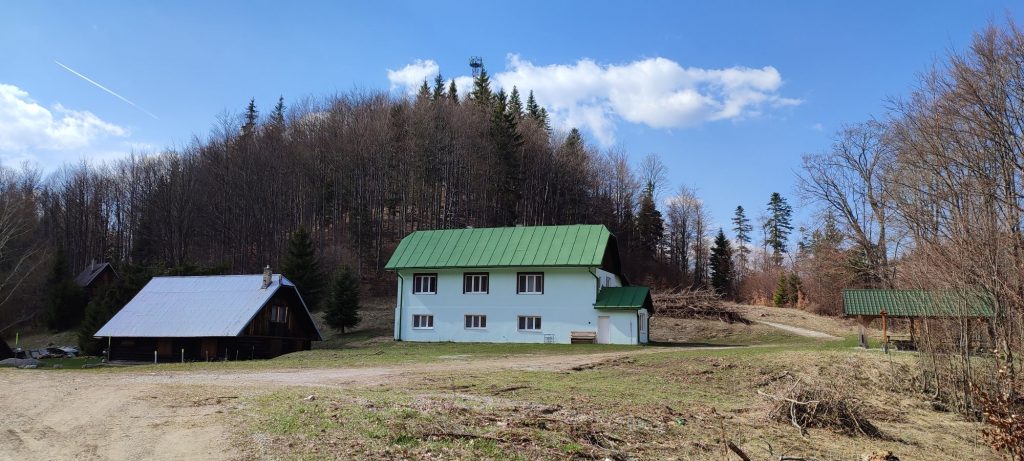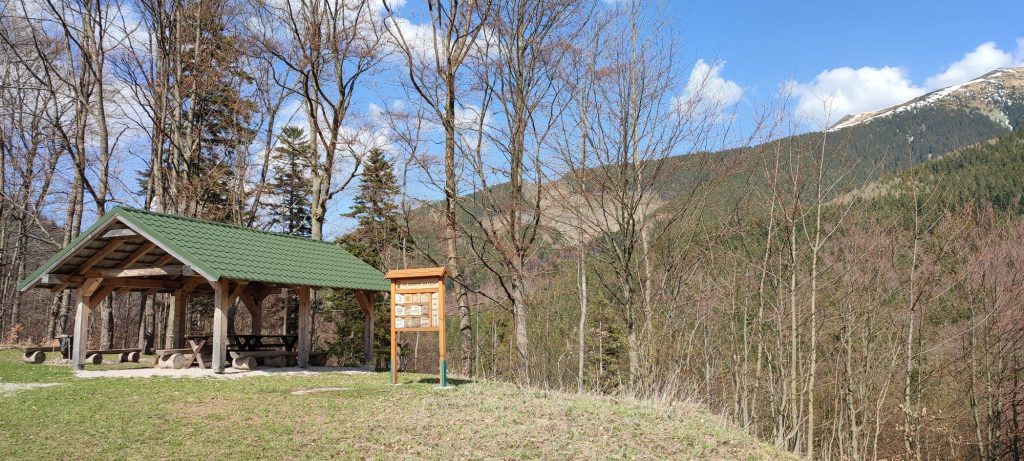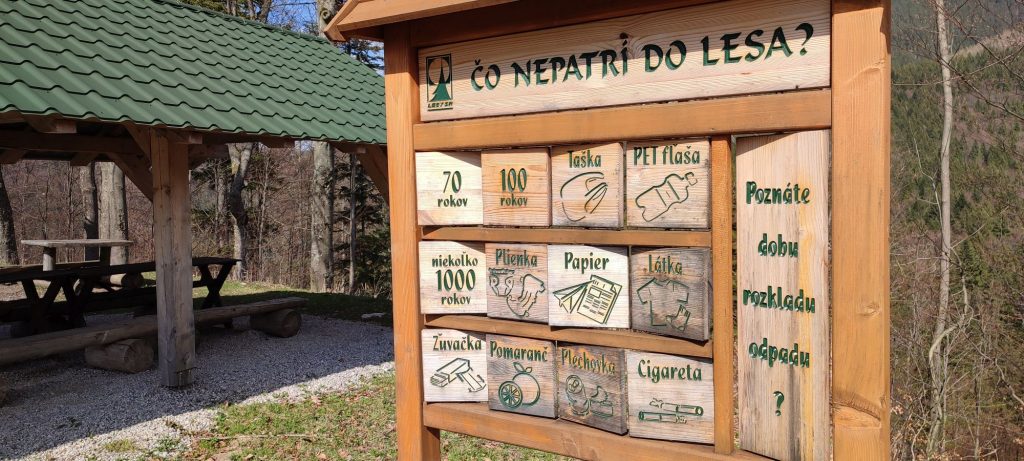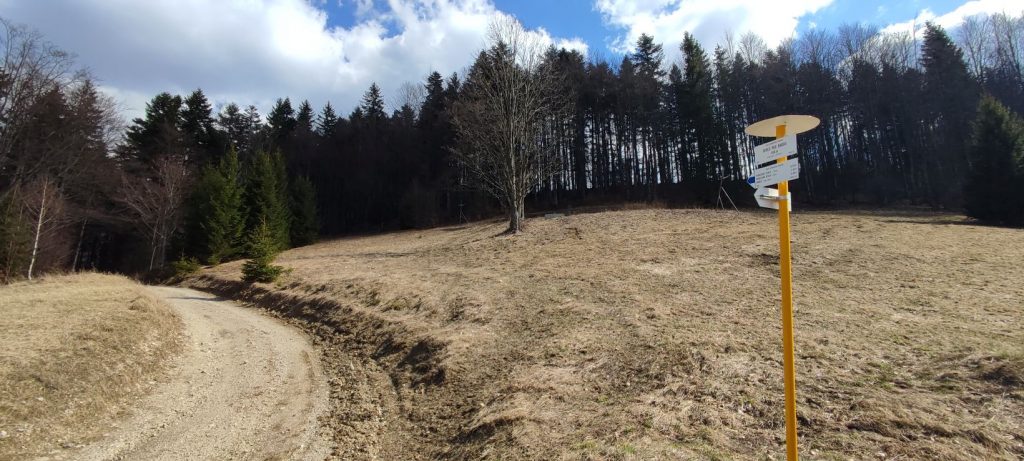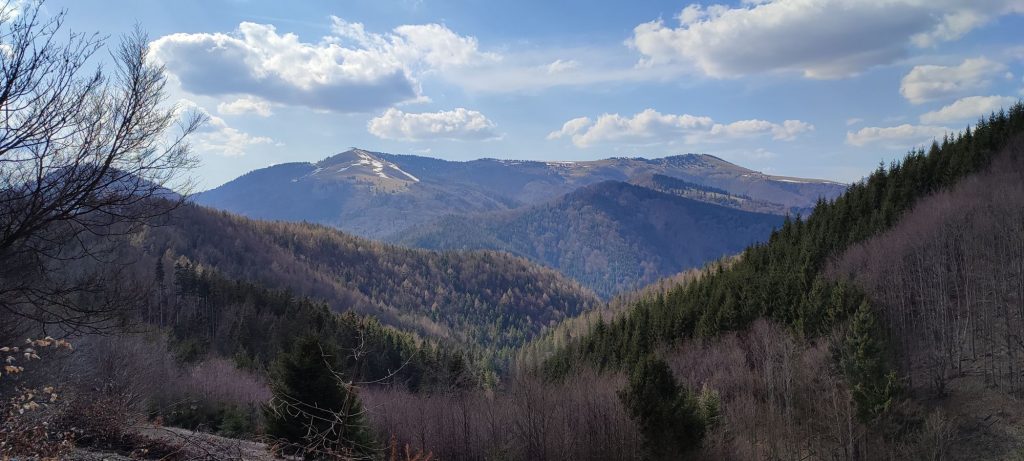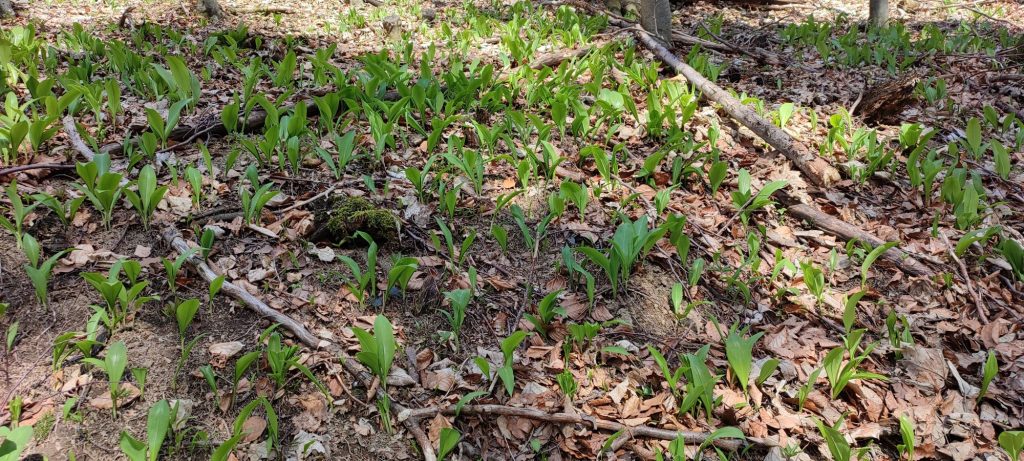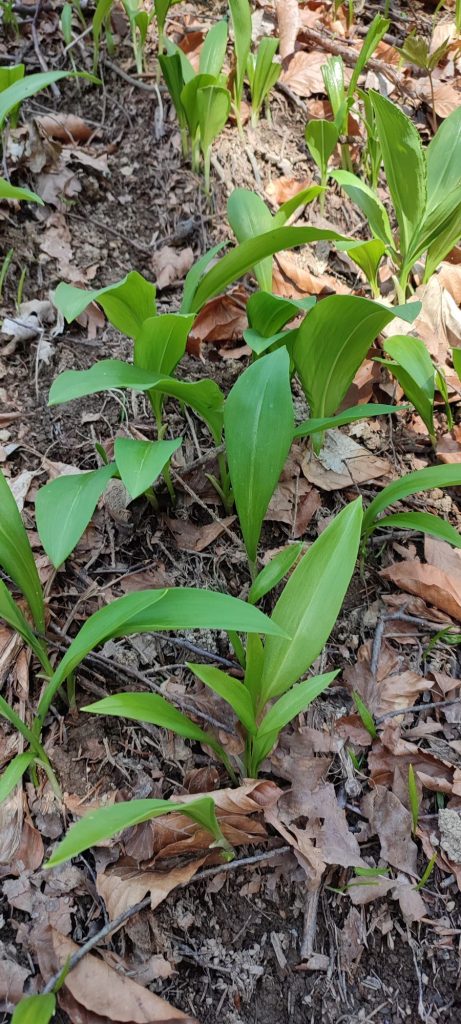Nature as Therapy: To Notch “Sedlo pod Babou”
Our next trip into nature will lead us to a location which visitors usually just pass through without paying closer attention. Notch “Sedlo pod Babou” is situated to the south of Ružomberok, in the Low Tatras National Park. The southern periphery of Ružomberok district consists mostly of wooded areas, which hide many nooks and treasures. We chose this destination with a specific intention to bring awareness to the fact that we need to maintain our nature pure and healthy.
We begin the route at the intersection below Korytnica, to which we can get by buses running in the direction to Donovaly. From the bus stop, we set out in the direction to Korytnica, following a low-frequented road by the creek in the valley, framed by steep slopes covered with woodland. For guidance, we will use the blue hiking trail marking, which will guide us all the way to our destination. After approximately twenty minutes of walking, we arrive in the spa town of Korytnica. The spa complex situated in Korytnica is no longer in operation, but its name is still well-known not only in our country, but also in the neighbouring Czech Republic or Hungary. On this trip, we will not focus on the mineral springs, which are situated in this area with their freely available medicinal waters. We will focus on that which was used in the spa for treatment of various illnesses, but which is not talked about as much as it probably should be. That is the climate and the mountain environment. Did you know that Korytnica records the highest annual rainfall in the Ružomberok district? That is one of the reasons why the environment surrounding this town has such wholesome effects. The air humidity comes not only from the evaporating rainfalls, but also from trees, which, in their process of obtaining nutrients from the soil, emit small aerosols of water into the air, along with providing oxygen production. The high hills with steep slopes assist in keeping the air humidity in the valleys and in preventing the sunshine from heating up the air, which would take the humidity away. This type of environment is popular not only with people, but also with many plants, among which we can mention bear’s garlic in the current season.
The plant which is named after the fragrance and flavour of garlic, and which is allegedly eaten by bears first after waking up from hibernation, offers many benefits. The benefits of the garlic are best received by consumption of fresh leaves directly in nature. The leaves can be easily stored by freezing them, however, they lose some of their beneficial properties. Any other form of processing recommended by “guaranteed” recipes found online will destroy a large portion of the nutrients for which it is worth collecting. Bear’s garlic can be found in many places in our mountains, however, they are usually not accessible via any distinct roads or trails. You also need to keep in mind that the locations where we can find it are usually a part of protected territories. That is why whenever we choose to go hiking or foraging herbs in the woods, we should check whether we are even allowed to freely enter these locations. What we need to pay attention to with the young leaves of bear’s garlic is that they can be easily confused with the highly poisonous lily of the valley. However, after tearing off the leave, the garlic is easily recognizable based on its fragrance. Moreover, lily of the valley usually grows later, when the garlic is already in bloom and no longer suitable for foraging, as it has lost its benefits. The main rule when foraging this plant should be to only collect what you are able to use. In each bunch, we leave one or two leaves, so that the plant bulb will have enough energy to survive until next year. In any case, we never pull it out with the roots and we always put it into a canvas bag or a basket after picking it, which allows it to breathe and prevents it from getting warm, just like you do when you pick mushrooms. We recommend eating it raw as a side dish, or chopped and mixed in with various types of dips. The leftover leaves can last in the fridge for three to seven days, depending on the type of storage or fridge. In addition to replenishing your body with vitamins, bear’s garlic also strengthens the immune system, helps with digestion and has antiseptic effects.
Anyways, enough with the theory, now let’s get back to our trip. From Korytnica, we continue on a paved sloping road, leading us past mineral springs, into a wooded area. Running mildly uphill, the road leads us to our destination after about half an hour of a pleasant walk through the woods. In notch Sedlo pod Babou, there are cabins and a shelter recently added to the cabin area, in which we may sit down when it is not being used by the visitors of the cabins. By the cabins, we may notice an old, no longer functional ski tow, which used to provide something to do for people in this area during long winter months. From the notch, you get lovely views of the ridge of Prašivá, or Nová Hoľa with the cableway above Donovaly. In the area surrounding the cabins, you can also find bear’s garlic, which we talked about earlier.
And why did we choose this location? Well, because in accordance with the idea of #ObjavUdržateľnéSlovensko (DiscoverSustainableSlovakia), we want to bring your attention to the fact that the authors of the shelter situated in the notch remembered to do something extra when building the shelter. Next to the shelter, they installed a rotating educational panel, which, in an easy form, educates people about how long it takes for different things to decompose in nature. Similar educational elements are located in the Ružomberok district at various places, building awareness of the fact that there are many things in nature which do not belong there and which are going to remain there for a very long time, unless we help and carry these things away.
After resting, and perhaps also finding and collecting some bear’s garlic, we head back along the same route, to the place where we started our trip. It is best to plan your way back in order to avoid waiting for the bus for a long time, and if you do have some time to spare, it is better to spend it in the woods or in the spa complex, where you are recharging your energy by being in nature.
On our next trip, we are going to visit a place where we can collect some herbs, as we want to start preparing our supply for the upcoming winter.
The text was prepared by Milan Kolčák and Ján Benčík from the Ružomberok Information Centre.
This is the eighteenth article of the article series with subtitle Nature as Therapy.
Published: 5.5.2022

